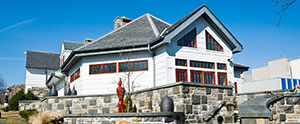Title: Some Recent Results in Fractional Bessel-like Ordinary and Partial Differential Equations
Speaker: Dr. Pavel B. Dubovski, Stevens Institute of Technology, NJ
Date: Wednesday, October 16, 2024
Time: 12:30 pm - 1:30 pm
Room: S-213 (Dr. Joseph Bertorelli Classroom)
Abstract
We study ordinary and partial differential equations involving fractional Bessel-like operators.
Our work presents new results on the existence and uniqueness of solutions and explores methods for constructing these solutions, particularly within the framework of fractional series. As a key outcome, the methods we propose, that combine integral transforms with fractional series, enable the analysis of quasi-Euler and constant-coefficient equations. Additionally, these techniques can be applied to elliptic-like PDEs with fractional Cauchy-Euler operators, which are a specific case of the Bessel operator. We also observe a hyper-dimensionality phenomenon in certain fractional differential equations, where an unexpectedly large number of linearly independent solutions exist. These theoretical findings are supported by computational evidence. The results presented are from joint work with L. Boyadzhiev and J. Slepoi.
In the second part of the talk, P. Dubovski will introduce a collaborative project on writing a textbook on fractional analysis. Currently, there is no comprehensive textbook suited for undergraduate or graduate students, and this project, in collaboration with De Gruyter publishers, aims to address that gap.
References:
Fract. Calc. Appl. Anal. 2021, 2022; IOIP Series 2021; J. Math. Sci. 2022; J. Appl. Analysis 2023; Mathematics 2024.
Short Bio:
P. Dubovski received his Ph.D. in Mathematical Physics from Moscow State University and his Dr.Sc. from the Institute of Numerical Mathematics, Russian Academy of Sciences. Since 2003, he has been with Stevens Institute of Technology. His research focuses on mathematical kinetics and modeling, integral equations, hydrodynamics, integrable probability, and fractional analysis.



